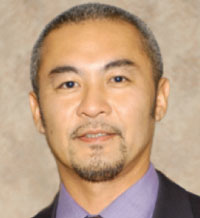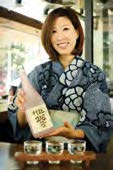What type of sake is Ginjo?
The fundamental meaning of Ginjo is “sake brewed under close examination and scrutiny,” generally understood to be sake raised to the level of art from thorough brewing by the brewing master who further refines the highest quality of sake rice. Previously, since sake was produced for submission to sake competitions, these sake were not sold in the market. However, Ginjo is garnering attention as high-end sake due to the Japanese sake boom during the past twenty years.
“Standards for Manufacturing Methods and Quality Indication for Sake” by the National Tax Agency defines Ginjo as sake produced according to the Ginjo production method utilizing sake rice polished below the rice polishing ratio of 60 percent, regulated as sake with a “characteristic aroma and good luster and color.” This is the definition for Ginjo sake, however, “Daiginjo” is defined as sake with the rice polishing ratio of below 50 percent, with a “characteristic aroma and especially good luster and color.”
Also, Ginjo consists of the Honjozo type and Junmai type, with the Honjozo type prepared by adding a small amount of distilled alcohol prior to the filtration process (the limit to the amount of additives is the same amount regulated for the Honjozo type). Therefore, Ginjo actually consists of four different types – the Honjozo type consisting of “Ginjo” and “Daiginjo,” and the Junmai type consisting of the “Junmai Ginjo” and “Junmai Daiginjo.”
Ginjo is different from other Japanese sake due to the unique aroma consisting of apples, bananas, and other fruity aromas. This aroma is referred to as the “Ginjo aroma,” and this aroma is the life of Ginjo.
However, not all Ginjo necessarily have this aroma notably, some with a faint Ginjo aroma while hardly detectable in other Ginjo. The sake production method that generates this unique aroma is called the “Ginjo method.” First, sake rice suitable for brewing sake (such as “Yamanishiki” rice) is used and carefully polished to high rice polishing ratios over time, with the water content absorbed to suppress moisture in the steamed sake rice.
Rice malt is prepared using special young rice malt while the highly-rated No. 9 yeast is used to prepare yeast for Ginjo, then fermented at low temperatures over a long period of time.
For general sake, the highest temperature for fermenting mash is generally around 59 degrees F, with fermentation suppressed to around 20 days, approximately. However, for Ginjo, the fermenting mash is fermented below 50 degrees F for over 30 days approximately, at low-temperatures theoretically close to the limit for fermentation. Also, the lower the temperature is for fermentation, the more days it takes for fermentation, adding additional work and costs. However, this effort is what generates the fresh, fruity, elegant Ginjo sake aroma.
“Standards for Manufacturing Methods and Quality Indication for Sake” by the National Tax Agency defines Ginjo as sake produced according to the Ginjo production method utilizing sake rice polished below the rice polishing ratio of 60 percent, regulated as sake with a “characteristic aroma and good luster and color.” This is the definition for Ginjo sake, however, “Daiginjo” is defined as sake with the rice polishing ratio of below 50 percent, with a “characteristic aroma and especially good luster and color.”
Also, Ginjo consists of the Honjozo type and Junmai type, with the Honjozo type prepared by adding a small amount of distilled alcohol prior to the filtration process (the limit to the amount of additives is the same amount regulated for the Honjozo type). Therefore, Ginjo actually consists of four different types – the Honjozo type consisting of “Ginjo” and “Daiginjo,” and the Junmai type consisting of the “Junmai Ginjo” and “Junmai Daiginjo.”
Ginjo is different from other Japanese sake due to the unique aroma consisting of apples, bananas, and other fruity aromas. This aroma is referred to as the “Ginjo aroma,” and this aroma is the life of Ginjo.
However, not all Ginjo necessarily have this aroma notably, some with a faint Ginjo aroma while hardly detectable in other Ginjo. The sake production method that generates this unique aroma is called the “Ginjo method.” First, sake rice suitable for brewing sake (such as “Yamanishiki” rice) is used and carefully polished to high rice polishing ratios over time, with the water content absorbed to suppress moisture in the steamed sake rice.
Rice malt is prepared using special young rice malt while the highly-rated No. 9 yeast is used to prepare yeast for Ginjo, then fermented at low temperatures over a long period of time.
For general sake, the highest temperature for fermenting mash is generally around 59 degrees F, with fermentation suppressed to around 20 days, approximately. However, for Ginjo, the fermenting mash is fermented below 50 degrees F for over 30 days approximately, at low-temperatures theoretically close to the limit for fermentation. Also, the lower the temperature is for fermentation, the more days it takes for fermentation, adding additional work and costs. However, this effort is what generates the fresh, fruity, elegant Ginjo sake aroma.
吟醸酒とは
吟醸酒の本来の意味は「吟味して醸造した酒」ということで、一般には、最良の米を磨きに磨き、杜氏が丹精を込めて造った芸術品ともいえる酒、と解釈されている。以前は品評会用に造られた酒だったから、市場に出回ることはほとんどなかったが、ここ20年ほどの間の日本酒ブームで高級酒として脚光を浴びている。 国税庁の「清酒の製法品質表示基準」では、吟醸酒とは精米歩合60% 以下の高精白米を使用した「吟醸造り」の日本酒で、「固有の香味、色沢が良好なもの」と規定されている。たんに吟醸酒という場合はこの規格だが、精米歩合を50%以下まで高め、「固有の香味、色沢がとくに良好なもの」の場合は「大吟醸酒」と表示することができる。また、吟醸酒には、本醸造タイプと純米タイプとがあり、本醸造タイプのものは、搾りの工程の前に少量の醸造アルコールが添加されている(添加量の限度については、本醸造酒の規格と同様)。したがって吟醸酒には、本醸造タイプの「吟醸酒」と「大吟醸酒」、純米タイプの「純米吟醸酒」と「純米大吟醸酒」との4種類があることになる。
吟醸酒は他の日本酒とはかなり風味の違う酒であり、リンゴやバナナなどフルーツに似た独特の芳香がある。この香りは「吟醸香」または「吟香」と呼ぶが、この香りこそが吟醸酒の命といえる。ただし、すべての吟醸酒 にこの香りが明瞭にあるわけではなく、かすかにしかないものや、ほとんど感じられないものも中にはある。この香りを出すための特別な製法を「吟醸造り」という。 まず、米は特別に栽培された大粒の酒造好適米(たとえば「山田錦」など)を用い、時間をかけて高度に精米し、限定吸水によって蒸米水分を抑える。麹は「突き破精型」の特殊な若麹を用い、酒母も吟醸酒用として評価の高い清酒酵母(たとえば「きょうかい9号」酵母など)を選び、低温でゆっくりと発酵させる。一般に普通酒の場合、もろみの発酵中の最高温度は摂氏15度あたりで20日間前後で発酵を終えるが、吟醸酒では摂氏10度以下で30日間前後もかけて発酵させる。この低温発酵は、発酵理論上から見て限界に近い温度だという。また、低温であればあるほど発酵に日数がかかり、手間、コストとも余計にかかるが、こうすることで、フレッシュでフルーティー、そしてエレガントな吟醸香が生まれるのである。






